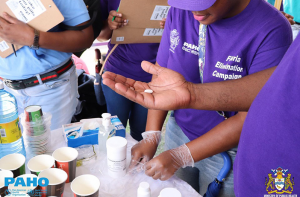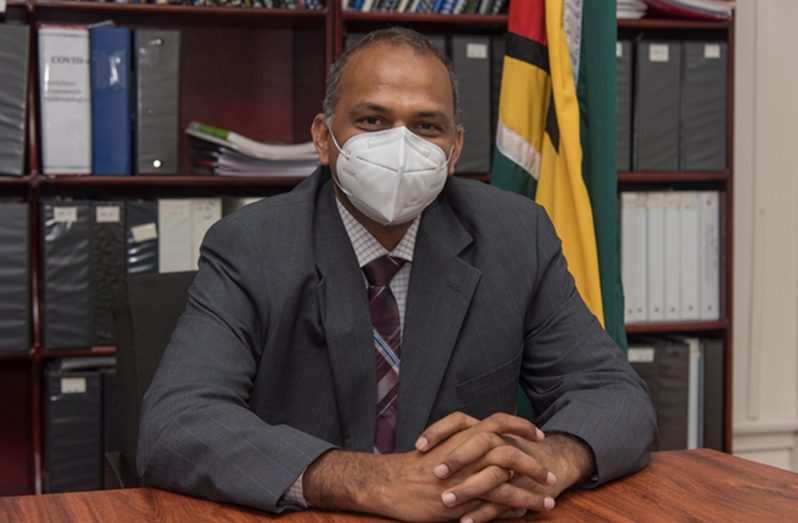— Guyana can lose gains made in the past few years, if distribution not successful
IT is crucial for Guyanese to take the filaria pills that will be distributed from February 14, so that the gains made over the past few years to eliminate filaria as a public health issue will not be lost, Health Minister, Dr. Frank Anthony said.
During his daily COVID-19 update on Tuesday, Minister Anthony stated that the distribution of the pills will begin in Regions Three and Four on February 14. It is expected that this rollout will last about two weeks, during which time a number of pill distributors will be going house-to-house to distribute the medicine.

Subsequently, in March, the pills will be distributed in Regions Six and 10, before the health personnel move onto the other regions. The entire distribution should be finished in March. “If we’re successful at getting about 70 per cent of the population to take these tablets, we would be able to eliminate filaria from Guyana,” the Health Minister affirmed.
In October, 2017, the local health authorities launched a reconceptualised, multi-year Mass Drug Administration (MDA) campaign, seeking to eradicate Lymphatic Filariasis (LF), commonly called filaria or “big foot,” in Guyana. Through this, efforts are made to have at least 70 per cent of the population consume the ‘filaria pills’- Diethylcarbamazine citrate (DEC), Albendazole (ALB) and Ivermectin (IVM) – to sterilise and kill the worms that cause filaria.
Filaria is caused by bancrofti worms and is transmitted by culex mosquitoes. According to the World Health Organisation (WHO), it affects the body’s lymphatic system, which functions to remove unwanted fluids from the body and transports ‘lymph’- a fluid which contains white blood cells that help to fight infections. Though Guyana is one of few countries in the Americas to still have this disease, if this year’s MDA is successful, Guyana will be able to eliminate it.
The success of this multiyear MDA lies squarely on the population taking these pills, this year. If not, Guyana would have to restart another MDA and try to eliminate LF once again. “If you go beyond a certain time period, we’ll have to start all over again because that first dose medication which was distributed in 2017) would not be all that effective and when you do the second dose, it’s not going to have the same impact,” Dr. Anthony explained.
A combination of the three pills will be given to individuals on the basis of their height. Pregnant women, seriously ill persons, children less than two years old and shorter than 90 cm of height will not be given the pills. In the revitalised 2017 MDA, the Education Ministry was recruited to join the campaign, since in a previously unsuccessful filaria campaign, children were the group that failed to meet the minimum percentage for coverage.
“While schools in the past (rounds of this MDA) have been one of the areas that we’ve targeted, because the students are out of school but they are at home, once we do the house-to-house work we’ll be able to reach them as well,” Dr. Anthony explained recently.
The smaller number of older students, who have been allowed to return to their schools for physical engagements, would be given the tablets there. Just as in previous rounds, it is expected that the students will take the tablets unless their parents have signed dissent forms preventing them from consuming the filaria medication.
If someone is infected with filaria, they may develop chronic conditions, resulting in swelling of the legs and scrotum. Locally, the swelling of tissues in the leg is called ‘big foot,’ while scrotal swelling is termed ‘goadie.’ There is no cure for filaria, which means that these chronic manifestations are irreversible. And it is for this reason that taking the tablets to prevent infection is imperative.




.png)









